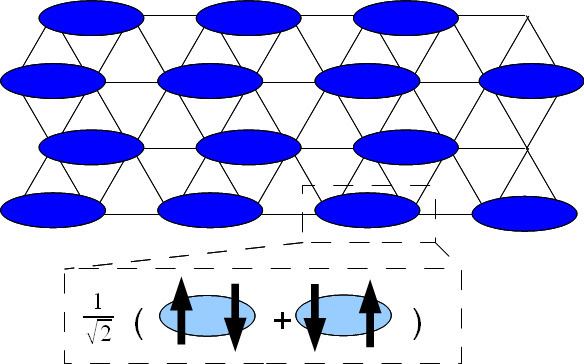 | ||
In condensed matter physics, the resonating valence bond theory (RVB) is a theoretical model that attempts to describe high temperature superconductivity, and in particular the superconductivity in cuprate compounds. It was first proposed by an American physicist P. W. Anderson and Indian theoretical physicist Ganapathy Baskaran in 1987. The theory states that in copper oxide lattices, electrons from neighboring copper atoms interact to form a valence bond, which locks them in place. However, with doping, these electrons can act as mobile Cooper pairs and are able to superconduct. Anderson observed in his 1987 paper that the origins of superconductivity in doped cuprates was in the Mott insulator nature of crystalline copper oxide. RVB builds on the Hubbard and t-J models used in the study of strongly correlated materials.
In 2014, evidence showing that fractional particles can happen in quasi two-dimensional magnetic materials, was found by EPFL scientists lending support for Anderson's theory of high-temperature superconductivity.
Description
The physics of Mott insulators is described by the repulsive Hubbard model Hamiltonian:
In 1971, Anderson first suggested that this Hamiltonian can have a non-degenerate ground state that is composed of disordered spin states. Shortly after the high-temperature superconductors were discovered, Anderson and Kivelson et al. proposed a resonating valence bond ground state for these materials, written as
Where
